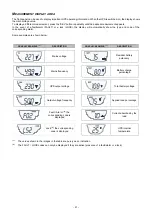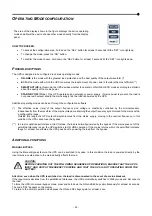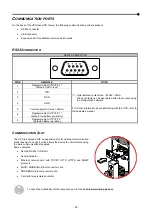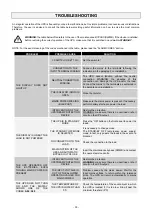
- 16 -
P
OWER
C
ONNECTION
ALL OPERATIONS DESCRIBED IN THIS SECTION MUST BE PERFORMED BY QUALIFIED PERSONNEL
ONLY. Our Company assumes no liability for damages caused by incorrect connections or operations
not contained in this manual.
The UPS has HAZARDOUS electrical voltages inside it, even when the input and/or battery switches are
off. The inside of the UPS is protected by safety panels which should not be removed by untrained
personnel. All installation and maintenance or operations involving access inside the UPS require the
use of tools and may ONLY be performed by trained personnel.
To carry out the following operations, the UPS must be disconnected from the mains power supply,
switched off, and with all the equipment switches and fuse holders open.
1. We recommend using double-insulated
multi-core cables to be connected,
respectively, to the “INPUT” and
“OUTPUT” terminals.
2. For the cross section, refer to the
paragraph "Connection cables cross
section details".
3. The wires should be stripped and
inserted into the terminals (for the length
of the stripping, refer to the paragraph
“Connection cables cross section
details”).
NOTE:
To remove the wire, insert a flat
blade screwdriver into the clamp slot
above the wire inlet.
4. Secure the cables with the cable glands.
5. When the installation is complete, close
the drawer cover and secure with the
screws.
Terminals cover installation
I
NTERNAL
P
ROTECTIVE
D
EVICES OF THE
UPS
Located within the UPS are fuses (not accessible, not recoverable) in order to protect the rectifier input stage and the batteries.
SHORT CIRCUIT
If a fault occurs on the load, the UPS protects itself by limiting the value and the duration of the current supplied (short circuit
current). These values also depend on the UPS operating status at the time of the fault, these can either be (in the "Technical
Data” table the protection characteristics and timings are described):
UPS in NORMAL OPERATION: the load is switched instantaneously to the bypass line; the input line is connected to
the output without any internal protection.
UPS in BATTERY OPERATION: the UPS protects itself by providing an higher current than the nominal one (see
paragraph “Technical Data”) and turns itself off after this time has elapsed.
BACKFEED
The UPS has internal protection against backfeed.
















































